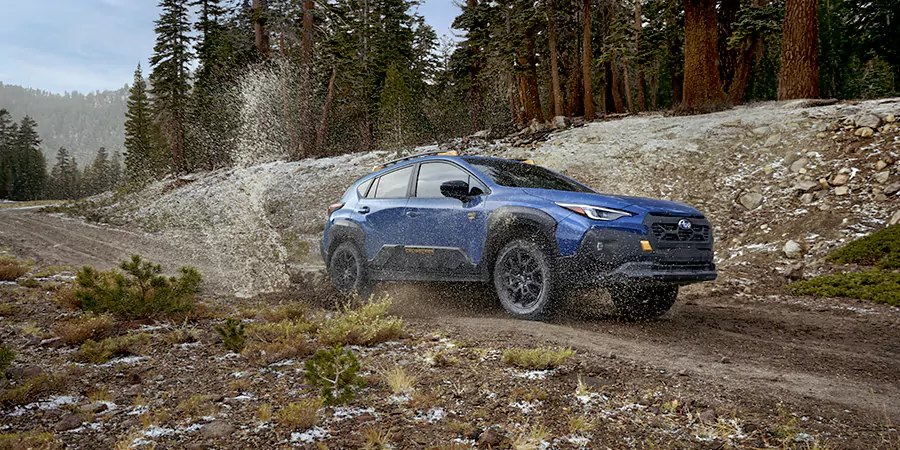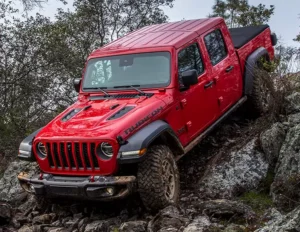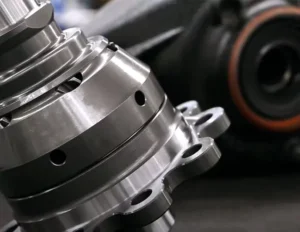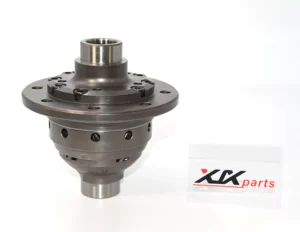
All-wheel drive, also called full-time four-wheel drive or AWD, typically provides power to all four wheels at all times. Many modern AWD vehicles have anti-skid systems that distribute power from front to rear or side wheel to side wheel. So if one wheel starts to spin, a computer or mechanical device sends power to the other three wheels to help the vehicle continue moving. Most AWD vehicles do not have a user-controlled setting to force the vehicle into two-wheel drive mode, nor do they have high or low reduction gear transfer case settings.
In off-road driving, while all-wheel drive (AWD) vehicles can handle some mild off-road conditions, they are not the best choice for serious off-roading. To really understand why AWD is not an ideal off-road configuration, first understand its difference from four-wheel drive (4WD) and its limitations in actual driving.
AWD lacks low-speed gear
For off-road enthusiasts, low-speed gear (also called low-speed four-wheel drive) is an indispensable tool. 4WD vehicles are equipped with low-speed gears. When climbing mountains, passing boulders or deep mud, low-speed gears can multiply the torque output of the engine, allowing the vehicle to traverse difficult terrain more smoothly. AWD systems generally do not have such low-speed gears. They are mainly designed for highway driving or light unpaved roads. When encountering steep slopes or obstacles that require high torque, they seem to be powerless.
Limited torque distribution
The original intention of the AWD system was to improve stability in daily driving, especially to provide better grip in rainy and snowy weather or slippery roads. But its torque distribution ability is limited. Most AWD vehicles have torque distribution that is automatically adjusted between the front and rear axles. Although this is good for improving traction on the highway, when facing complex terrain off-road, such as mud, sand or boulders, the AWD system cannot accurately control the torque of each tire like 4WD, which sometimes causes a tire to lose grip and the entire vehicle to slip.
Insufficient ground clearance
Real off-road vehicles, such as specially designed 4WD SUVs or trucks, usually have a high ground clearance. This is to prevent the vehicle chassis from scraping the ground when crossing large rocks, branches or steep slopes. Most AWD vehicles, especially urban SUVs, have relatively low ground clearance. This means that when off-road, the vehicle chassis is more susceptible to damage from terrain obstacles and may even get stuck. In addition, low ground clearance also limits AWD vehicles from entering more challenging off-road routes.
Lack of differential locker
Differential lockers (or locking differentials) are key weapons in off-roading, ensuring that when one wheel loses grip, the other wheels can still get power to keep the vehicle moving forward. In AWD vehicles, although some models have similar electronic assistance systems, such as electronic stability control, they usually cannot work as effectively in extreme off-road environments as traditional mechanical locking differentials. The differential lock can force the two wheels to rotate synchronously, so even if one wheel is completely suspended or slipping, the other wheel can still get enough power to help the vehicle get out of trouble.
Design for highway use
Most of the designs of AWD vehicles are originally intended to improve the comfort and fuel economy of daily driving. Their suspension systems, tires and body structures are more biased towards the driving needs of urban roads or highways. In contrast, true off-road vehicles, such as 4WD vehicles, have more robust suspension systems and tires that are mostly specialized off-road tires that can cope with complex road conditions such as rocks and mud. The suspension and tire design of AWD vehicles can easily cause damage or impassability when faced with these harsh conditions.
Limitations of electronic systems
Most AWD systems rely on complex electronic systems to manage torque distribution and grip. On the road, this system reacts very quickly and can cope with slippery roads, loss of control when turning, etc. However, in off-road driving, electronic systems often do not have the reliability and durability of 4WD vehicles. Especially when electronic systems are affected by mud, sand or water, they may fail, causing difficulties in off-road.
Conclusion
Although AWD vehicles perform well in daily urban driving and light off-road (such as unpaved dirt roads or gravel roads), they are not designed to cope with truly harsh off-road environments. For those who really want to challenge complex off-road terrain, 4WD vehicles are obviously a better choice with low gears, differential locks, higher ground clearance and more rugged design. Therefore, if you want to pursue off-road excitement, especially to conquer difficult off-road routes, it is wise to choose a suitable 4WD vehicle.
AWD is suitable for people who occasionally need to go off-road but spend more time driving in cities and highways. If you often go to jungles, mountains, and river valleys, let AWD take a break. 4WD is the real “off-road king”.



